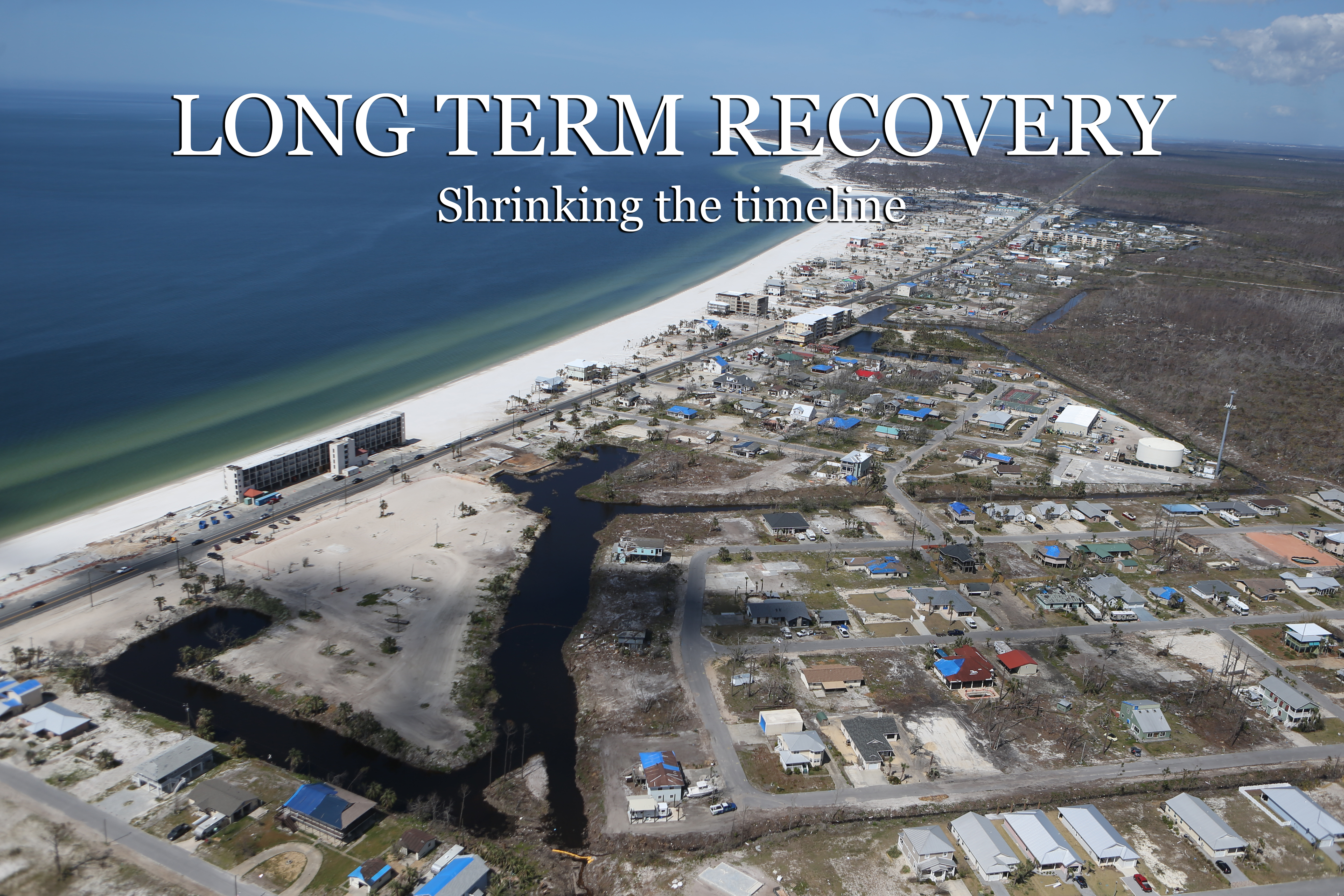
260 ideas for how to recover
Six months after Hurricane Michael brought Bay County to its knees, a coalition of political officials, business leaders, government experts and private citizens is preparing to seize back their community’s future.
Three months after its formation, the Bay County Long-Range Recovery Task Force and six volunteer working group branches have assembled a roster of more than 260 specific projects and concept proposals that they have identified as vital to the county’s full recovery. The scope of recommended action is as broad as the swath of destruction the Category 4 hurricane left across the eastern Panhandle last October 10. The price tag for making Bay County and its seven cities whole is still beyond measure. Only sixty-one of the 260 projects listed in the Task Force database are far enough along in planning to contain cost estimates, yet they total more than $716,000,000. The remainder will likely add up to $1 or $2 billion.
“We’ve got some legs and we can move fast” to use the report when finished into an action plan, said Task Force Chairman Robert Carroll. “We’re going to work on every one of them,” he said of the list of projects.
The volunteer branches have focused on six specific topic areas important to the area’s recovery. They include economic recovery, infrastructure, natural and cultural resources, health and social services, housing and planning/capacity building. Carroll said not only were the branches successful in attracting subject experts to work on the various topics, but public interest has been strong as well.
“The whole purpose has been to get as much public input as possible,” said Economic Recovery Branch leader Will Cramer.
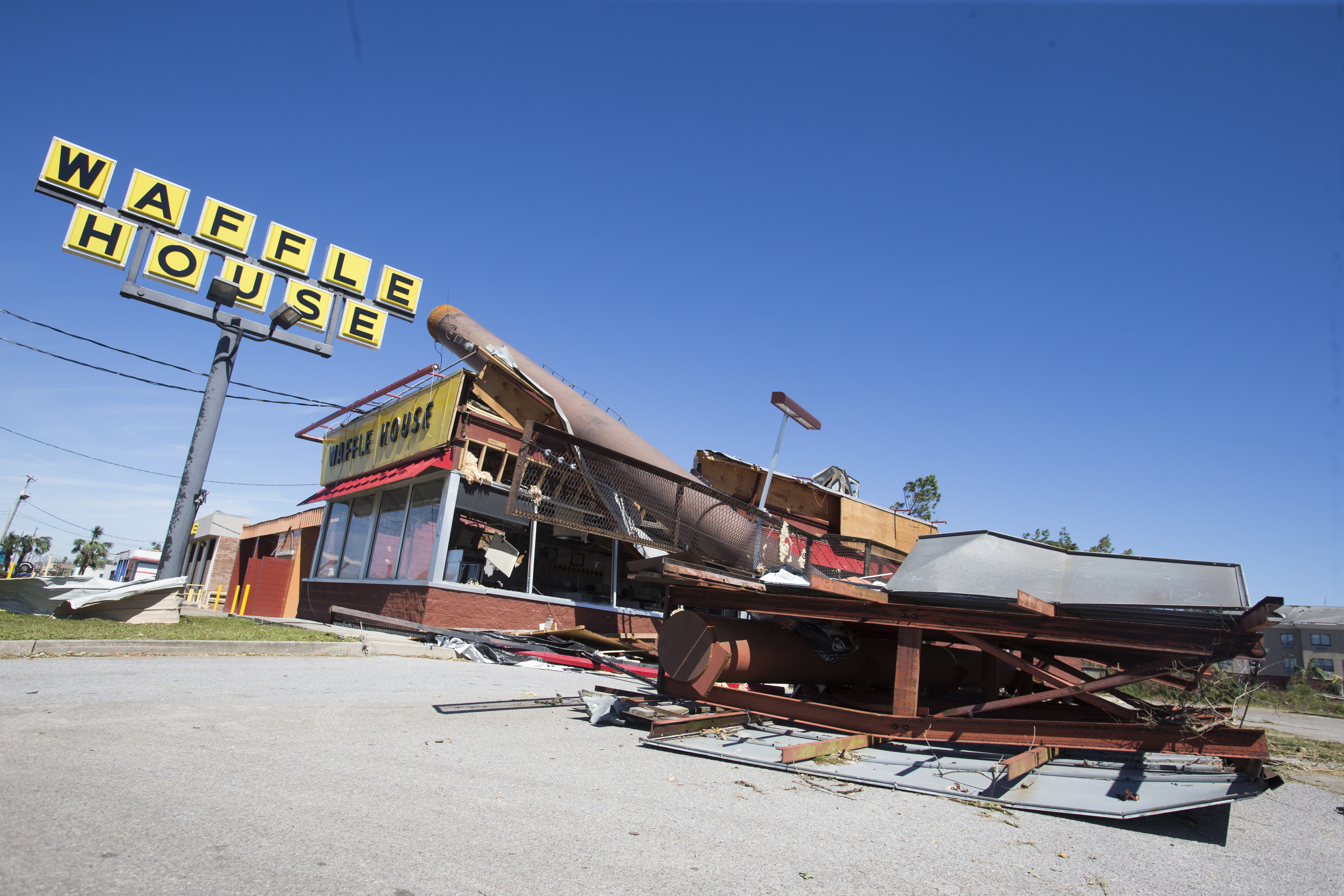
Economic Recovery
In their search for effective concepts to accelerate Bay County’s economic recovery from Hurricane Michael, branch leader Will Cramer says that he and his team of forty volunteers adopted a simple strategy: “If there’s a good idea, we’ll find a way to do it.”
During their three-month effort, which included four public sessions held across Bay County, the branch members compiled forty-eight specific projects, proposals and ideas for jump-starting the area economy. While not formally categorized, the Economic Recovery Branch list generally breaks down into three broad subject areas.
Direct responses to Hurricane Michael
The branch took a very close look at several specific “lessons learned” from the storm. Its roster includes several proposed projects that would significantly improve business recovery after a future disaster.
One key proposal is for the development of two business recovery centers – one in downtown Panama City and a second on Panama City Beach – that would serve as “one-stop shopping” for businesses needing information and assistance following a disaster. (This concept is also supported by the Infrastructure and Natural & Cultural Resources Branches).
“This was the No. 1 issue we found during the branch’s research and public sessions,” Cramer said.
Other proposals eye new development projects in areas seriously damaged by the storm. These include construction of a major business center in Callaway along the US 98 corridor; the creation of a “defense hub” to spark new businesses supporting Tyndall Air Force Base during its own reconstruction.
Other programs in that vein include the proposed creation of a county business database to aid other businesses; supporting the hardening of communications and wi-fi networks throughout the county; and supporting the previously announced Verizon 5G cellular network.
Accelerating previously planned projects
The Economic Recovery Branch called for the prompt development of eighteen projects that were in long-range strategic plans prior to the storm.
“There are plans that have been wants and needs of the county for quite a while,” Cramer said. “If we can speed up things that would normally take a decade to three to five years, that would be great.”
Examples include four projects to expand Port Panama City, totaling $63,000,000; construction of a Downtown Science and Technology Center in Panama City, previously estimated at $48,000,000; creation of an Advanced Manufacturing Innovation Institute, totaling $42,000,000, and the development of a downtown Panama City campus for Gulf Coast State College and FSU-PC, estimated to cost $5,000,000.
Of the forty-eight proposals, sixteen of them – primarily projects pre-dating Michael – total more than $253,000,000. The remaining thirty-two concepts as yet do not have cost estimates.
New concepts for economic recovery and business growth
The branch team came up with a dozen proposals spanning the spectrum of education, tourism, infrastructure and business recruitment.
They include attracting cruise ships to the port; establishing a “business accelerator” program to assist residents planning to open their own ventures; constructing concert venues throughout Bay County; and establishing a water transit system serving communities along St. Andrew Bay, from Allanton and Tyndall Air Force Base to downtown Panama City, St. Andrews and Lynn Haven.
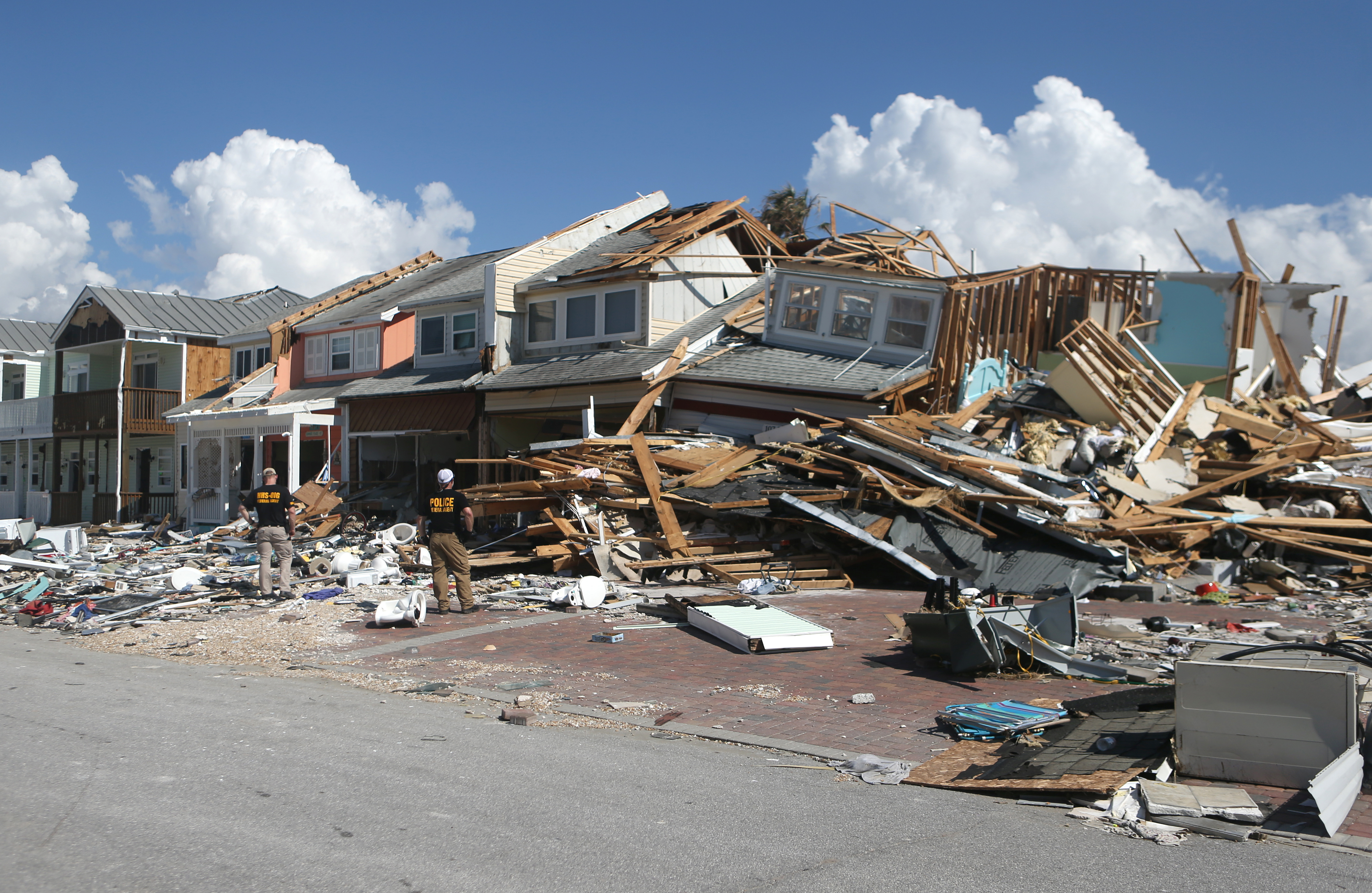
Housing
The housing numbers are not good.
Of the more than 8,000 apartments in Bay County complexes, less than half of them are still livable after Hurricane Michael. Of those that are left, only 30 are available as of April 3, reports show.
Couple that with the 1,755 single families homes that “100 percent” destroyed, according to the most recent property appraiser data, the 1,045 mobile homes that are goners, and the 56 condos that are completely wrecked and you have a burgeoning housing crisis.
And that’s just the buildings that are totally destroyed. Data shows 11 percent of the buildings in the county are 45 percent damaged or more, and 76 percent of buildings in the county are at least 5 percent damaged.
That means three out of every four building, including commercial, sustained some kind of hurricane damage.
This translates to 4,800 students homeless students in Bay District Schools, rising rent costs for the units that are left and population loss that makes it difficult for businesses to recruit and retain enough employees to keep the doors open.
This is the backdrop for the Long Term Recovery Task Force’s housing branch, tasked with gathering up the communities ideas for what can be done to address the problem.
“We’re looking for something, one that’s affordable not only from a renter’s standpoint but from a homeowners standpoint. We’re looking to develop communities, and we’re looking to bring our workforce back,” said Michael Johnson, the chairman of the Housing branch and Panama City’s Community Development Director.
Sustainability and resiliency, he said, are also significant factors.
Three ideas have risen to the top of the pile for bringing more housing to the area quickly — a tiny house community, shipping container houses and 3D printed homes.
Tiny houses are an idea the community has shown enthusiasm for immediately after, and even before, the hurricane. The current plan, dubbed The Villages, would have units for both rentals and home-ownership.
The other benefit is they can be moved in quickly. That’s also the appeal for storage container home, which are seen more as a temporary solution, Johnson said, and for 3D printing, which are concrete homes that can be constructed in 16 to 24 hours.
Panama City, Johnson added, is planning to have a 3D home printed on spec soon so people can “buy in and touch and feel it.”
“It’s pushing the envelope," Johnson said. “3D printed housing hasn’t really been done here in the U.S.”
All three of these ideas, though, hinge on having the funding to make it possible.
Other ideas being the Housing branch has compiled include public education programs to help people avoid potentially expensive mistakes, establishing a community land trust, creating a lending fund and building long-term affordable housing.
For it to work will require the area’s leaders to ultimately bring many partners to the table, including the Department of Housing and Urban Development, the Federal Emergency Management Agency, the Small Business Administration, legislators, banks, non-profits, developers, the construction industry and the community itself, Johnson said. The challenges continue to be immense in an area where contractors are booked months out, some people are still living in tents, and homeowners are still locked in battles with insurance for the money to more or start repairs.
But still, on paper at least, a plan is beginning to form.
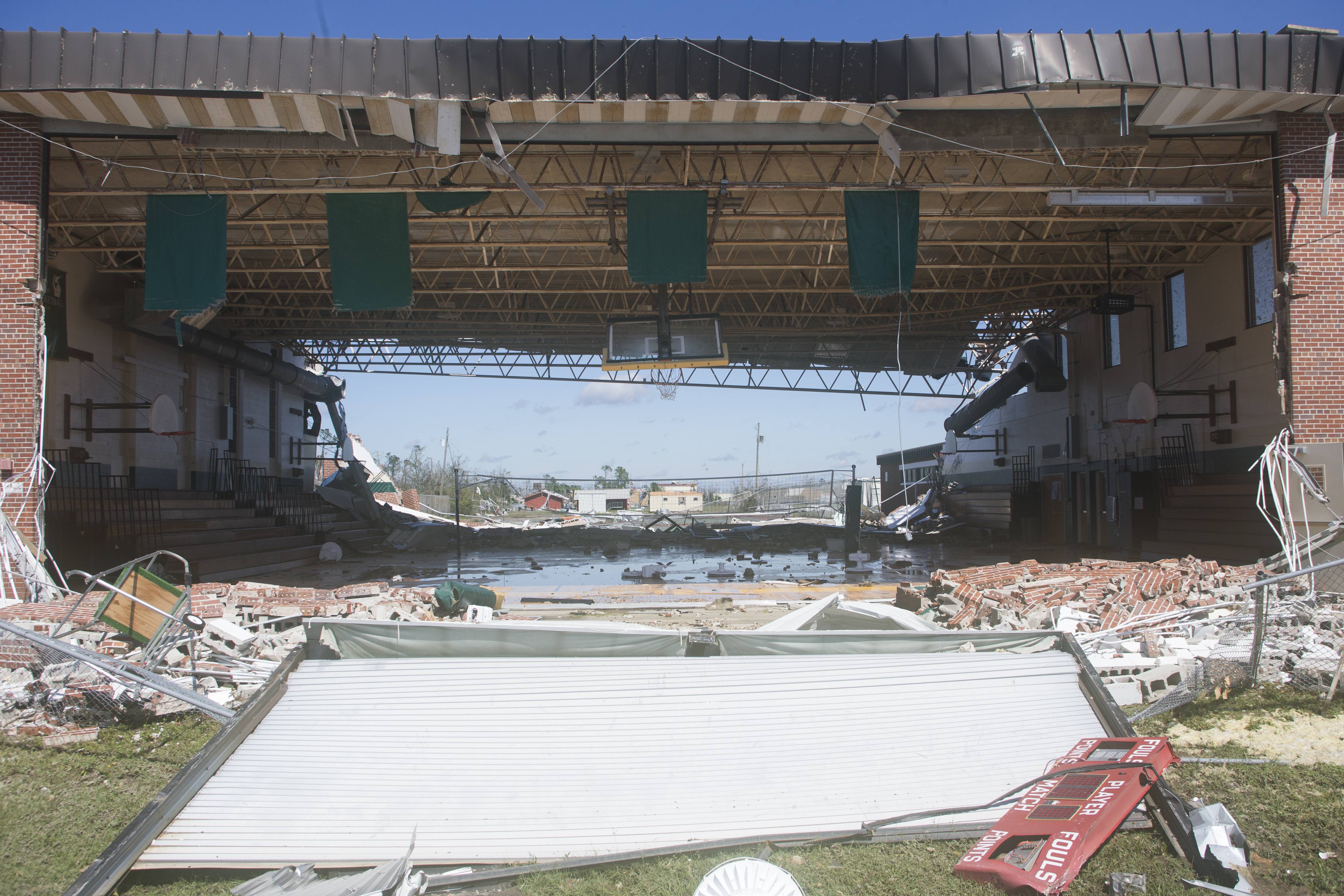
Health and Human Resources
For the Health and Social Services working group, the task isn’t so much recovery.
It’s resiliency.
It’s even part of one of their project ideas — a “Resiliency Center” that will help residents get back on their feet and be stronger than they were before, better prepared to weather the storm. Because, as Niki Kelly, Executive Director of Girls Inc. of Bay County said during a recent meeting, there will be another storm.
“When,” she said. “It’s inevitable. Something else is going to happen and we need to be prepared.”
The Resiliency Center concept isn’t a new one. Kelly said she spoke to officials in communities in Louisiana that created centers after Hurricane Katrina. There’s even a whole “Resiliency Network” along the Long Island Sound, serving communities from small town Connecticut all the way to Manhattan. The concept of the center, Kelly said, is to have something for everyone, from childcare to easily accessible retail, parking, public transportation, workforce training, activities for teens and senior citizens, even medical or dental facilities if needed. They can be tailored, Kelly said, to the needs of the community.
“It’s looking at how human behavior has changed, along with the physical environment,” Kelly said.
The centers will also be able to serve as hurricane or emergency shelters, rounding out the idea of the facility as a “safe space.”
Superintendent Bill Husfelt said of all the ideas presented, the Resiliency Center was the “most intriguing.”
The Health and Social Services branch brought together volunteers from various areas to create a kind of roadmap for how social services will look in Bay County in the coming years. It was lead by Husfelt, who said he would be bringing items to the Bay District School Board to pour funding into mental health services for both students and teachers. He said he has also met with the county to “re-do” the emergency shelter agreement.
“We think we’ve got a better plan for next time to make that flow better,” he said.
Larry Bolinger, CEO of Bay Haven Charter Academy Inc., put forward the idea of documenting everything the county has gone through and is going through in their recovery and commissioning a study to look at the data empirically so they’ll have the research and background, as well as a blueprint for when this happens in another community, or even here.
Heath Evans, President and CEO of Bay Medical, proposed lobbying for a pool of money that could be used as an incentive for physicians to move to the area. There’s a shortage of just about everyone in the healthcare industry, and he said physicians are particularly competitive. The money, he said, could be used to pay off their student loans if they stay in the community and work for a certain period, usually five years.
“It’s housing,” Evans said of the difficulty recruiting doctors. “And they have a lot of options. Each one of them has an option elsewhere.
Evans said he would also like to see officials lobby Congress for an emergency “multiplier” that could be added to Medicare and Medicaid reimbursement for a short-term, such as 12 months, to help offices get back up and running after a disaster.
On the law enforcement side, Sheriff Tommy Ford proposed the building of a substance abuse treatment facility as an extension of the Bay County Jail, which he said would be less expensive then the setup they have now, and fills a gap in the area as many treatment facilities were damaged or destroyed. He also proposed the building of a hardened facility for the Sheriff’s Office that could store equipment and serve as a safe place for law enforcement to shelter during a storm. At other times, it could be used as a training facility.
Another big idea came from Big Bend Community-Based Care and the Florida Health Department of Bay County, which could see a behavioral unit added to local hospitals, with a psychiatrist on site to handle mental health issues and Baker Acts, and who could diagnose and prescribe for patients.

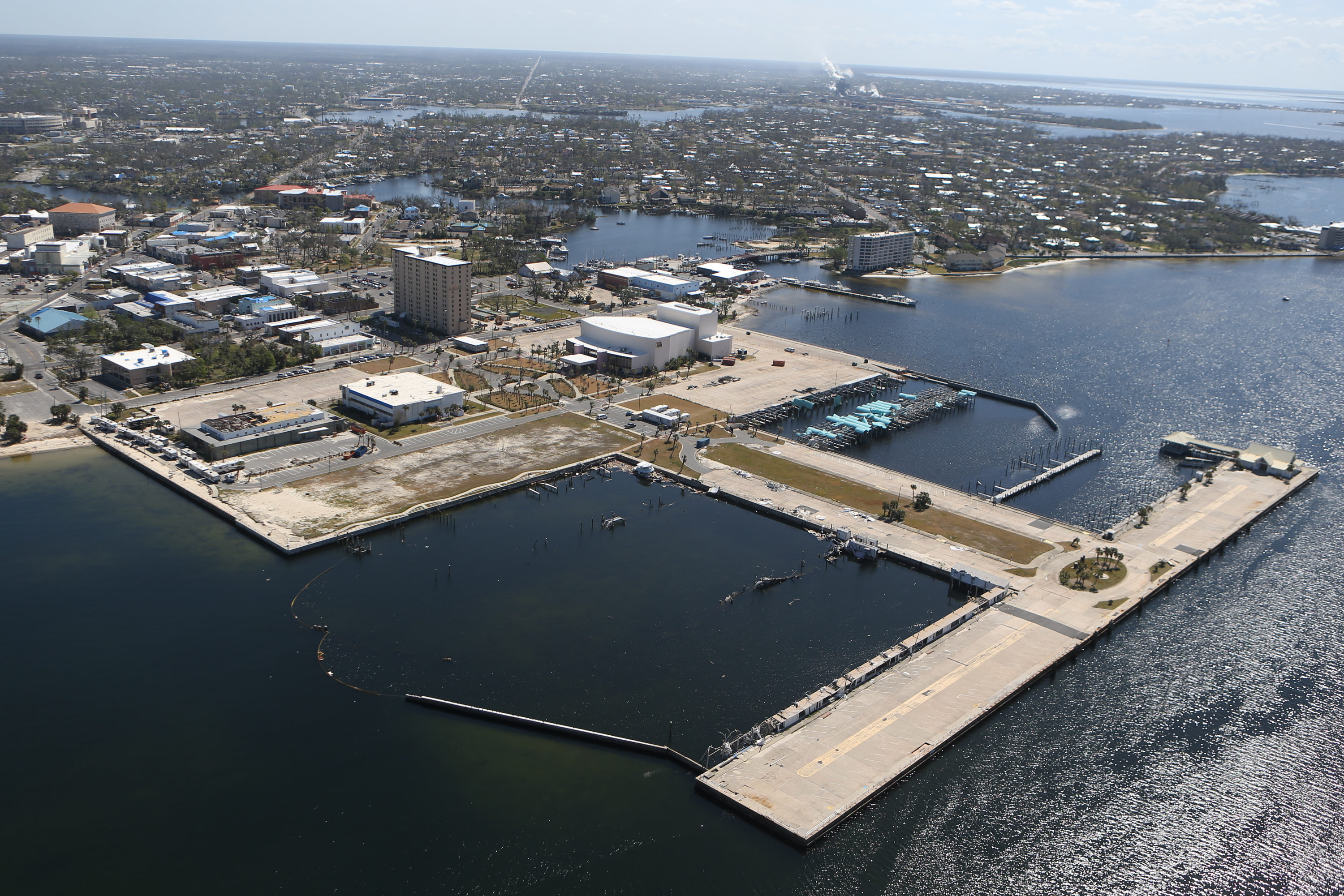
Natural and Cultural Resources
Hurricane Michael’s impact on Bay County and surrounding areas severely affected both the area’s natural and cultural resources, and the recovery effort will have to address them with equal vigor.
That’s the inherent message in a roster of twenty-six specific proposals compiled by Dan Rowe and the members of his Recovery Task Force working group during a series of five “listening events” during the past three months. The branch’s philosophy has been: “No idea is too small or too impossible not to put forward,” Rowe said.
The proposal with the largest physical dimensions is one that is obvious to all Bay County residents: replacing the thousands of downed trees that succumbed to the fury of Michael’s winds. While it is still in the earliest stage of development, Rowe said that a comprehensive plan employing state-of-the-art technology is being studied. Panama City Mayor Mayor Greg Brudnicki, one of the Task Force’s nine members, has previously called on planting 100,000 trees to replace those lost in the storm.
Rowe, whose day job is President of the Bay County Tourist Development Council, said three other projects coming out of the Natural & Cultural Resources Branch sessions concern the damage to county beaches from the storm surge last October 10. The branch recommends carrying out major shore protection and beach nourishment at Panama City Beach, St. Andrews State Park and Mexico Beach. Total cost estimate for the projects is $69,500,000.
With many area recreational and cultural sites sustaining storm damage, and with displaced residents forced to camp out in shelters hastily opened at several county schools immediately after the storm, Rowe’s working group has proposed the construction of four dual-use facilities that will improve area recreational, sports and cultural opportunities while serving as secure storm shelters in a future major hurricane. While no cost estimates yet exist, Rowe and his volunteers identified four specific buildings and locations to make them readily accessible to all county residents. They are:
• An indoor recreation center at the Beach Sports Complex off US 98: In a storm emergency this building would be dedicated to housing emergency responders and contractors taking place in recovery operations. The city has already made a $23.4-million request to the Triumph Gulf Coast fund to pay for the facility.
• A downtown conference center in Panama City: In an emergency, this facility would be used as a business recovery center, hosting recovery experts, insurance representatives, financial aid personnel and others.
• A recreational center serving central Bay County at SR 231 and Transmitter Road: This building would also server as a shelter for county residents in an emergency.
• A convention center in central Panama City Beach: In a hurricane or other emergency this would serve as a business recovery center for the Beach “island.”
“In between storm events, these facilities will give our citizens invaluable recreational and cultural purposes,” Rowe said. “It will also help those out-of-town responders” who after Michael struggled to find lodgings in the county, he added.
The branch also has recommended proceeding with four improvement projects at St. Andrews State Park, developing a new Museum of Man in the Sea facility, and a variety of smaller arts and recreational programs that will serve both residents and visitors, Rowe said.
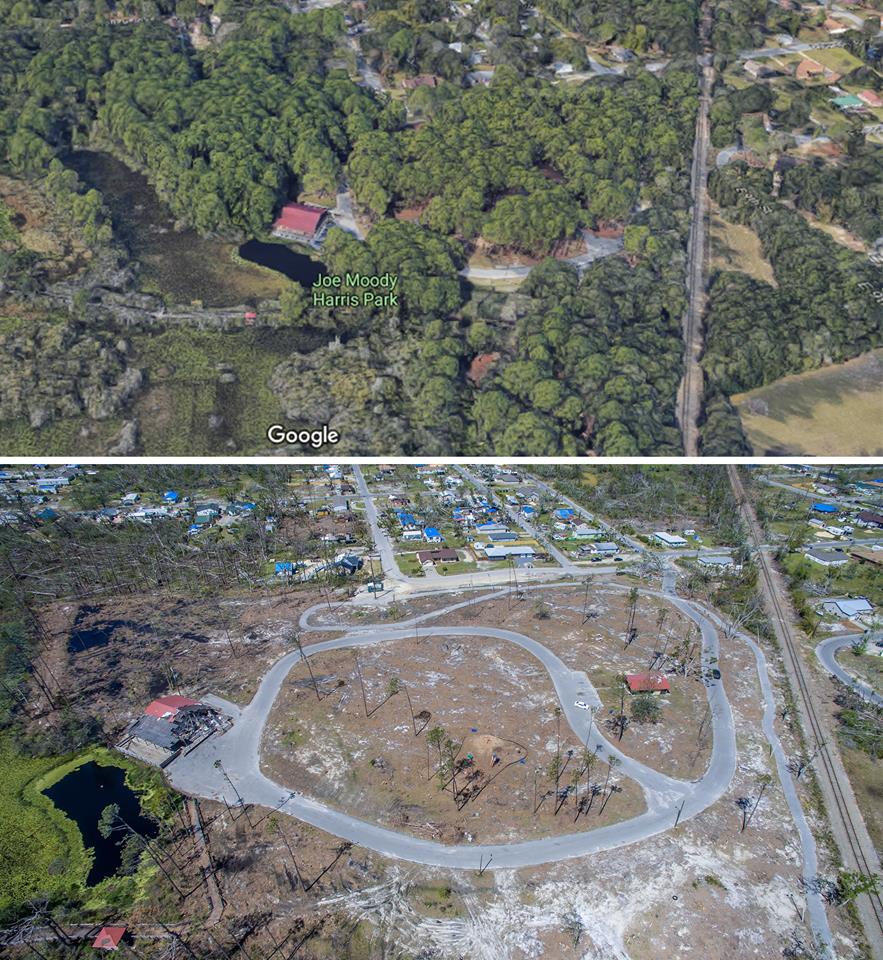

Infrastructure
Keith Bryant and his workshop volunteers pulled no punches when they surveyed Bay County for its infrastructure needs in the wake of Hurricane Michael as the Category 4 storm wreaked havoc on Bay County’s roadways, utilities, water and sewage treatment plants and communications networks.
“We took a big hit,” said Bryant, whose day job is Bay County public works director.
Bryant rapidly ticked off the litany of storm-related system failures: damaged or destroyed county government structures, collapsed cellular telephone networks, widespread electrical power and water outages, erosion on unpaved roads, debris-clogged stormwater runoff channels, and severely overcrowded highways and streets.
In response, Bryant’s working group of more than seven dozen volunteers has over the past three months assembled a laundry list that – in essence – calls for the complete transformation of the county’s physical infrastructure. As of this week, the branch volunteers have compiled eighty-eight specific proposals for the county’s comprehensive recovery plan. Twenty-nine of them were already under formal consideration before the storm and had reached a point where cost estimates were available, for a total of $365 million. Dozens of other, even more ambitious proposals could easily push the total infrastructure price tag above $1 billion.
Bryant broke the list of infrastructure proposals into five broad categories:
• Hardening stormwater systems: The workshop came up with five specific concepts for safeguarding stormwater runoff in Bay County, including the creation of regional stormwater facilities, stream restoration at all highway crossings, repair of existing stormwater channels into St. Andrew Bay, and debris removal from hundreds of streams and creeks. The group’s proposals also incorporate five planned stormwater projects that fall under the Panama City Beach Community Redevelopment Agency.
• Hardening communications: The widespread failure of cellular phone and radio networks during the storm prompted a half-dozen proposals to safeguard this vital function in future events, Bryant said. These include constructing a consolidated 911/dispatch center, and installing hardened and redundant communications lines at critical facilities such as hospitals, emergency operations centers and other government sites.
The county is already working on one communications upgrade on the branch’s list, Bryant said, expanding an existing fiber-optic communications line linking the county and Florida Department of Transportation to connect with emergency operation centers in Leon, Walton and Escambia Counties. “This is a short-term project,” he noted. “Just a couple of splices into the existing system.”
• Increasing transportation capacity: Long before Michael, officials were well aware that large sections of the county’s road network were severely congested. It was a situation that grew even worse with the arrival of thousands of responders and contractors commuting across the Hathaway Bridge each day, Bryant said. “At one point after the storm, traffic volume was up 400 percent from the pre-storm levels,” he added.
In this critical area, Bryant and his volunteers have endorsed a series of highway and bridge construction projects that, if completed, would literally transform the face of Bay County. Their concept list calls for the completion of the proposed Gulf Coast Parkway that runs from Mexico Beach through the West Bay development sector, terminating at US 98 in Walton County; construction of a full highway bypass on the Beach “island” north of and parallel to Back Beach Road running from SR 79 to Chip Seal Parkway; accelerated construction of phase 2 of the Thomas Drive flyover near NSA-PC, and construction of a North Bay Bridge linking the Beach “island” to SR 77 north of the Bailey Bridge.
The branch also includes a decades-old proposal to run a spur of Interstate 10 south to Panama City Beach.
• Upgrading and expanding utilities: The branch volunteers took an equally serious look at the state of water and sewage treatment capabilities throughout the county and have recommended 20 separate projects, either for new construction or significant upgrades. This includes the construction of a second water treatment plant at the Deerpoint Lake, with a cost estimate of $50,000,000; and building sewer systems at the Deerpoint Lake “protection zone” ($11,000,000), Grand Lagoon ($19,000,000) and Laguna Beach ($9,320,000).
“Some of these projects are long-planned upgrades,” Bryant said. “But others are direct results of Michael” particularly the Deerpoint water treatment plant.
• Environmental Protection: In addition to stormwater runoff control and improving sewage disposal. the Infrastructure Branch also recommends acquiring 2,000 acres within the Panama City crayfish habitat area to set aside as protected wetlands. In doing so, Bryant said, this would reduce the odds that the crayfish would be declared an Endangered Species. Such an act by the federal government would seriously complicate recovery efforts throughout the area, he said.
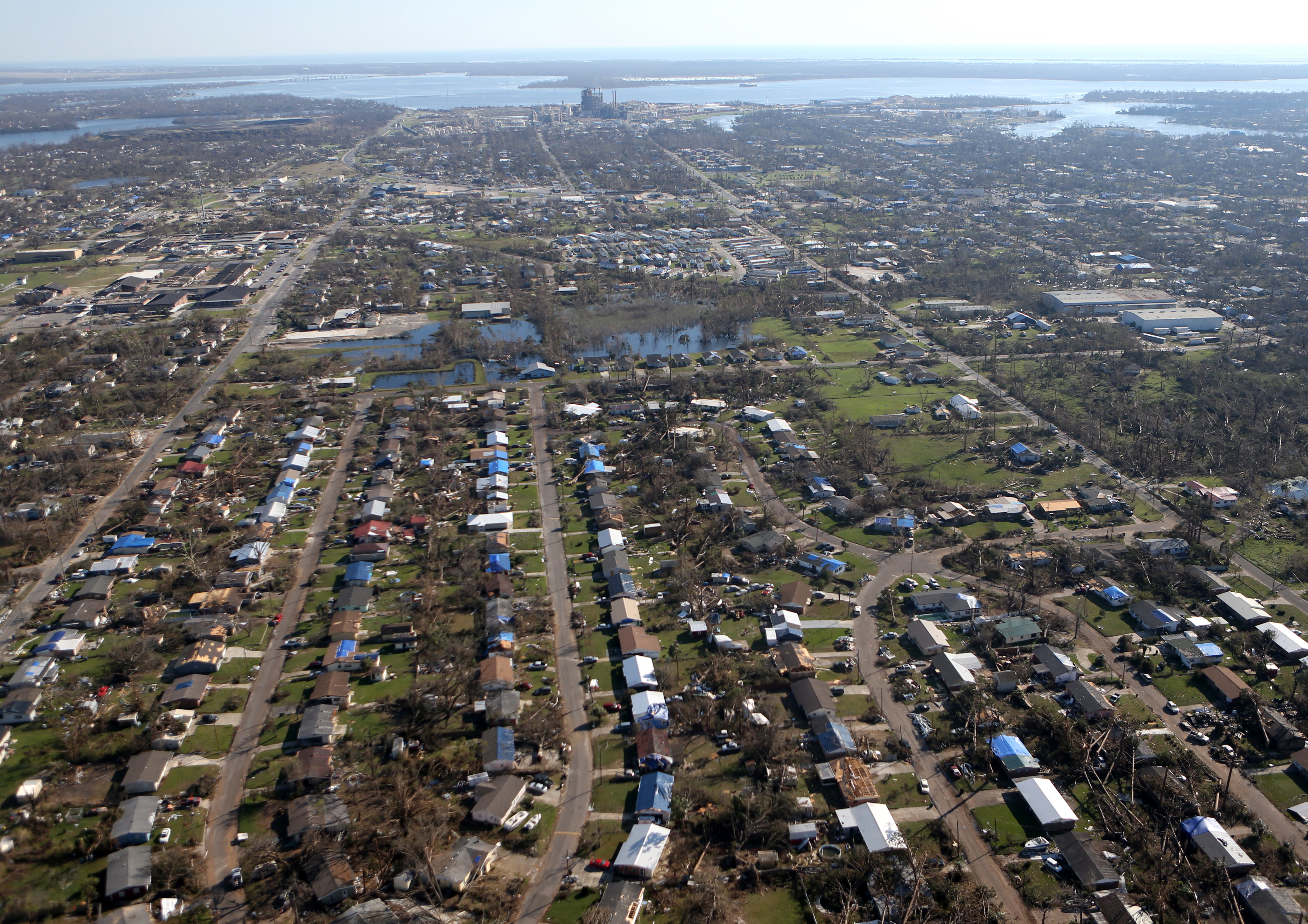
Planning
Before Bay County can truly recover and improve after Hurricane Michael, there needs to be a plan.
That’s where the Planning and Capacity Building branch of the county’s Hurricane Michael Long Term Recovery Task Force comes into play.
“We’re doing anything we can do to make things better post-storm … to make things better for the next storm,” said Ian Crelling, Community Development Director for Bay County and lead of the Planning and Capacity Building branch.
But with such a broad role, the Planning and Capacity Building branch has a variety of priorities and crossover with the Task Force’s other five branches. From economic development to infrastructure improvement, building code enhancement, historic structure restoration and temporary housing planning, the scope of the branch is vast.
As one entity, the Task Force will have an easier, direct line to state agencies and to the Federal Emergency Management Agency’s Integrated Recovery Coordination group, which oversees long-term recovery activities for states and communities.
In short, communities can get more aid money if they work together rather than apart.
Each of the six branches of the task force exists to compile detailed lists of projects and priorities for recovery and improvement, some of which need federal funding, while others do not.
And much of what the other branches have listed does or could easily fall under the Planning and Capacity Building branch’s purview, Crelling said.
“Some of this stuff could very easily be in planning, like enhancing trails and enhancing infrastructure,” Crelling said. “Increasing roads and creating new overpasses … parts of that will run through planning.”
Crelling said one of his branch’s priorities is to create a post-disaster plan for land development regulations that could be enacted by the county or cities if needed.
Crelling said that after the hurricane, many questions arose on the county level and among the cities regarding temporary housing, like mobile homes and RVs, and where they could be used for displaced residents.
“This plan could address all temporary housing and temporary land development questions,” Crelling said. “If you have another disaster to strike, you could have all that already laid out.”
Besides housing code issues, the branch is helping the task force’s economic recovery branch in planning post-hurricane business development. Specifically, the planning branch would help develop plans for post-disaster business recovery centers. These centers would be locations where business leaders could go to get training and education on the current situation and how they could move forward.
The branch also has a focus on historic building preservation, including plans to develop a resource toolkit that would help property owners with restoration and mitigation. Another proposed plan is to develop and maintain a system to flag historically significant properties.
The branch has plans for preservation and restoration of artificial reefs too.
“It’s going out there and monitoring and assessing existing reefs — have they moved and are they still intact after the storm,” Crelling said.
There’s still much more work left, but what the planning and capacity building branch has done so far has been successful, Crelling said.